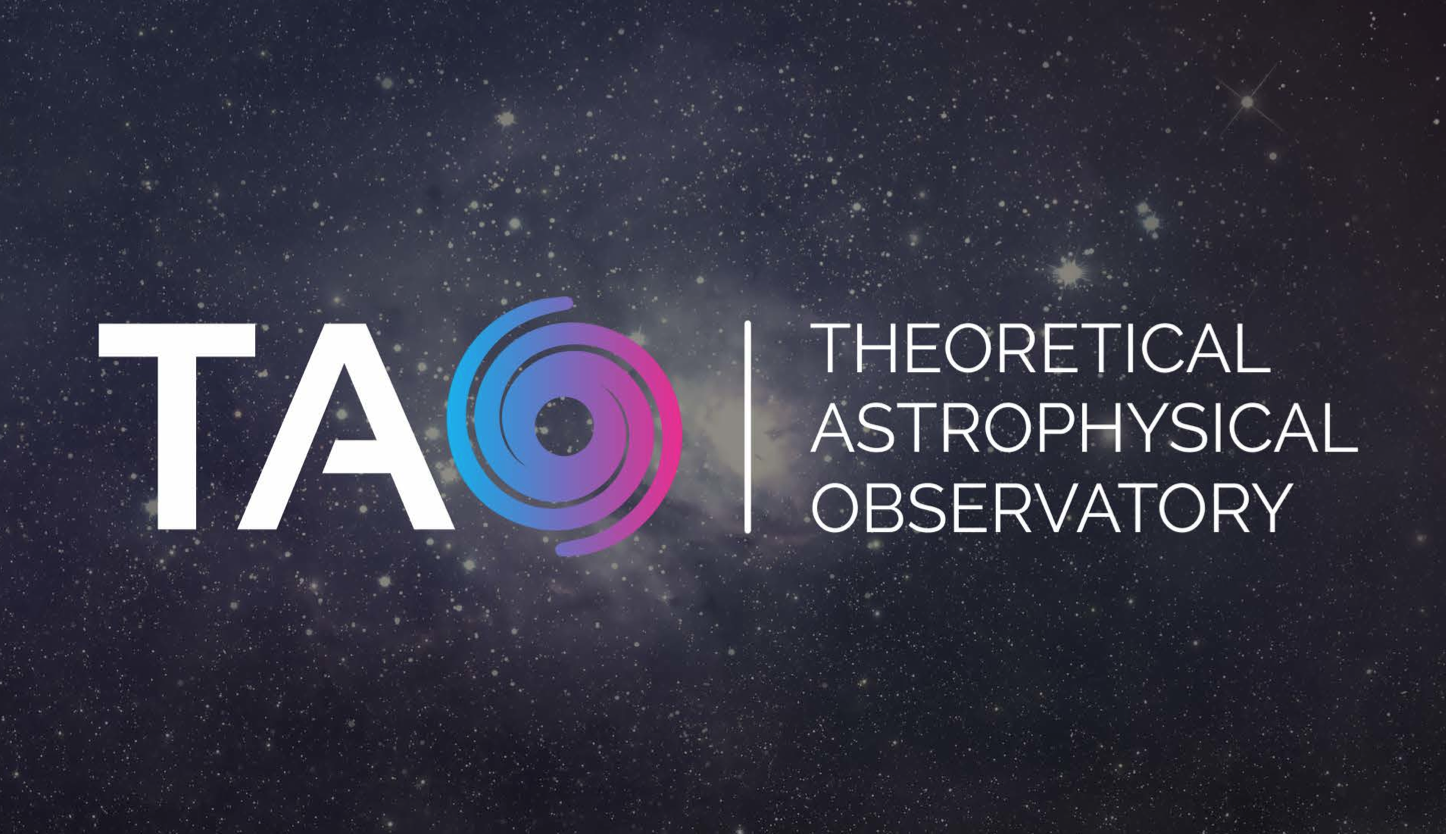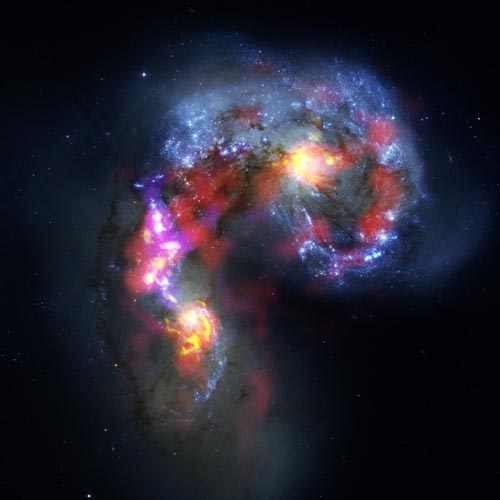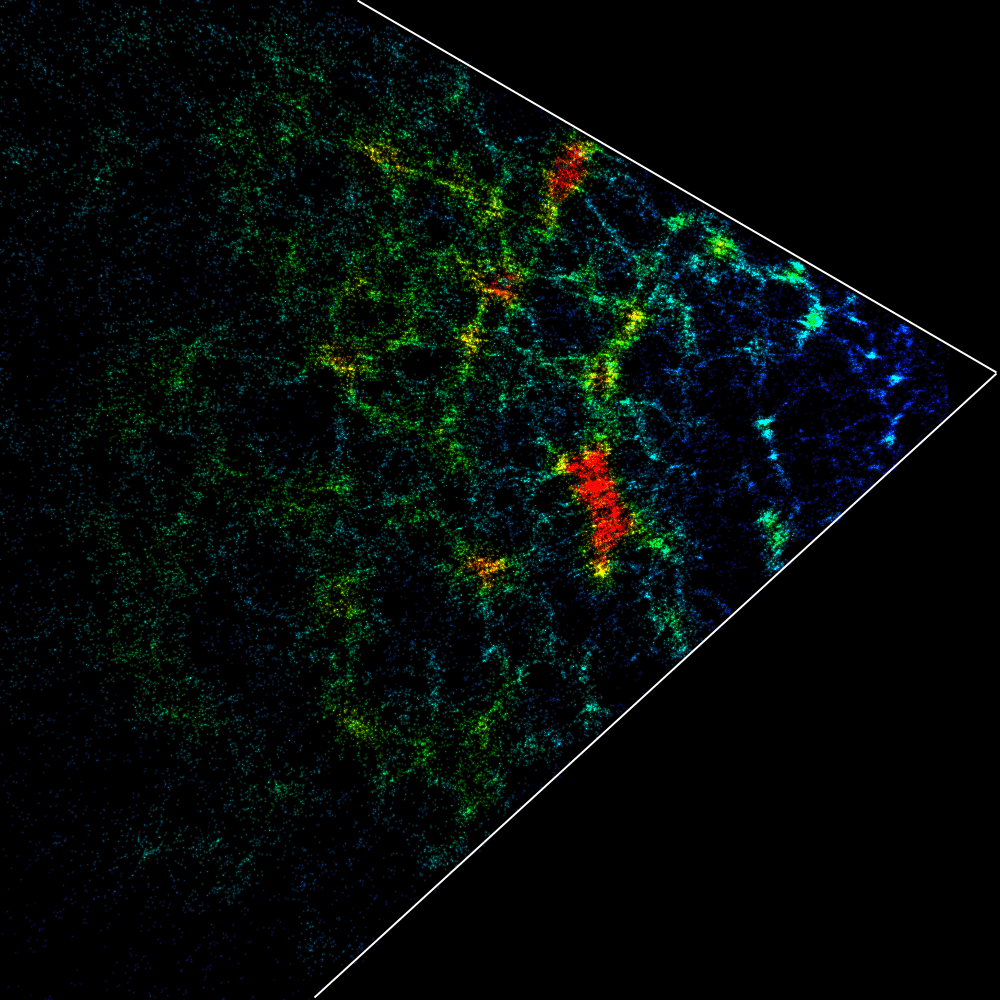
Galaxy formation and evolution.
Supermassive black holes and AGN.
Cosmology and large-scale structure.
Projects and Research


SAGE
The Semi-Analytic Galaxy Evolution model, or SAGE, is a publicly available codebase for exploring galaxy formation in a cosmological context. The model, described in Croton et al. (2016), is a significant update to that used in Croton et al. (2006) and has been rebuilt to be modular and customisable. SAGE will run on any N-body simulation whose trees are organised in a supported format and contain a minimum set of basic halo properties.

The Assembly of Structure in the Universe
At some point in the history of each massive galaxy we believe that its growth evolution decouples from that of its parent dark matter halo. This involves ill-understood baryonic physics that is still a matter of great debate. Observing galaxies out to high redshift and using this data to more accurately model such decoupling processes is beginning to shed light on which are important for galactic assembly and why.

Black Holes, Quasars, and Radio AGN
Black holes are now thought to play a central role in shaping the evolution of of galaxies. As quasars, the can shine brighter than all the stars in the galaxy, triggered from the violence of a galaxy-galaxy collision. Late in its life the black hole shifts to a low accretion state that can inject just enough energy into the surrounding galaxy so-as to starve the galaxy of any future star forming material. These (relatively) tiny objects have the potential to dramatically alter galactic evolution, making them critical objects of study.

The Environmental Dependence of Galaxy Formation
With the flood of quality data provided by galaxy surveys we have only recently been able to study galaxies across the full spectrum of environments. Naively, one would expect environment to be of great importance in shaping galactic growth. Interestingly however, environment appears to play second fiddle to a much a more fundamental factor: the mass of the galaxy's dark matter halo. Understanding exactly why this is and what processes are at play is of great importance.

Clustering and Voids in the Galaxy Distribution
Galaxy clustering provides a window into the unseen “dark” nature of the large-scale structure of the Universe. Using the clustering of different galaxy populations we can infer the masses of their host dark matter halo without ever having observed the dark matter directly. Clustering also allows us to probe the bias between luminous and dark mass. Voids provide an inverse view of structure formation. The large-scale clustering and void distribution within the cosmic web contains a wealth of information waiting to be probed.
Publications
My full list of publications are accessible through the SAO/NASA Astrophysics Data System
and can be found here.
About Me

I am a theoretical and numerical astrophysicist, focusing on the formation and evolution of galaxies in the local and distant Universe, using both simulations and large observational data sets. I work as a Professor of Astrophysics and Australian Research Council (ARC) Future Fellow in the Centre for Astrophysics and Supercomputing at Swinburne University of Technology in Melbourne, Australia.
I am a member of a number of large international galaxy and cosmology survey teams, working with data from the James Webb Space Telescope, Hubble Space Telescope, Spitzer Space Telescope, Keck Telescopes, and the Anglo-Australian Telescope. I am a lead member of the Uchuu cosmological simulation team, and built the galaxy formation models for the public release of the highly influential Millennium Run dark matter simulation, amongst others.
I founded the Theoretical Astrophysical Observatory (TAO), where you can make custom mock catalogues and images of the Universe, and developed the Semi-Analytic Galaxy Evolution (SAGE) galaxy formation codebase, which allows astronomers to construct their own large-scale galaxy formation models.
Currently, I serve as a Chief Investigator in two ARC Centres of Excellence: the ARC Centre of Excellence for All Sky Astrophysics in 3 Dimensions (ASTRO 3D) and the ARC Centre of Excellence for Dark Matter Particle Physics. I am also a member of the ARC College of Experts.
Contact
Have a question? Contact me!
Centre for Astrophysics and Supercomputing
Swinburne University of Technology
Mail Number H29, PO Box 218, Hawthorn, VIC 3122, Australia
Visit the Centre! Directions can be found here.
Office: AMDC 904a
Phone: +61-3-9214-5537
Fax +61-3-9214-8797
Or contact me via Email email
